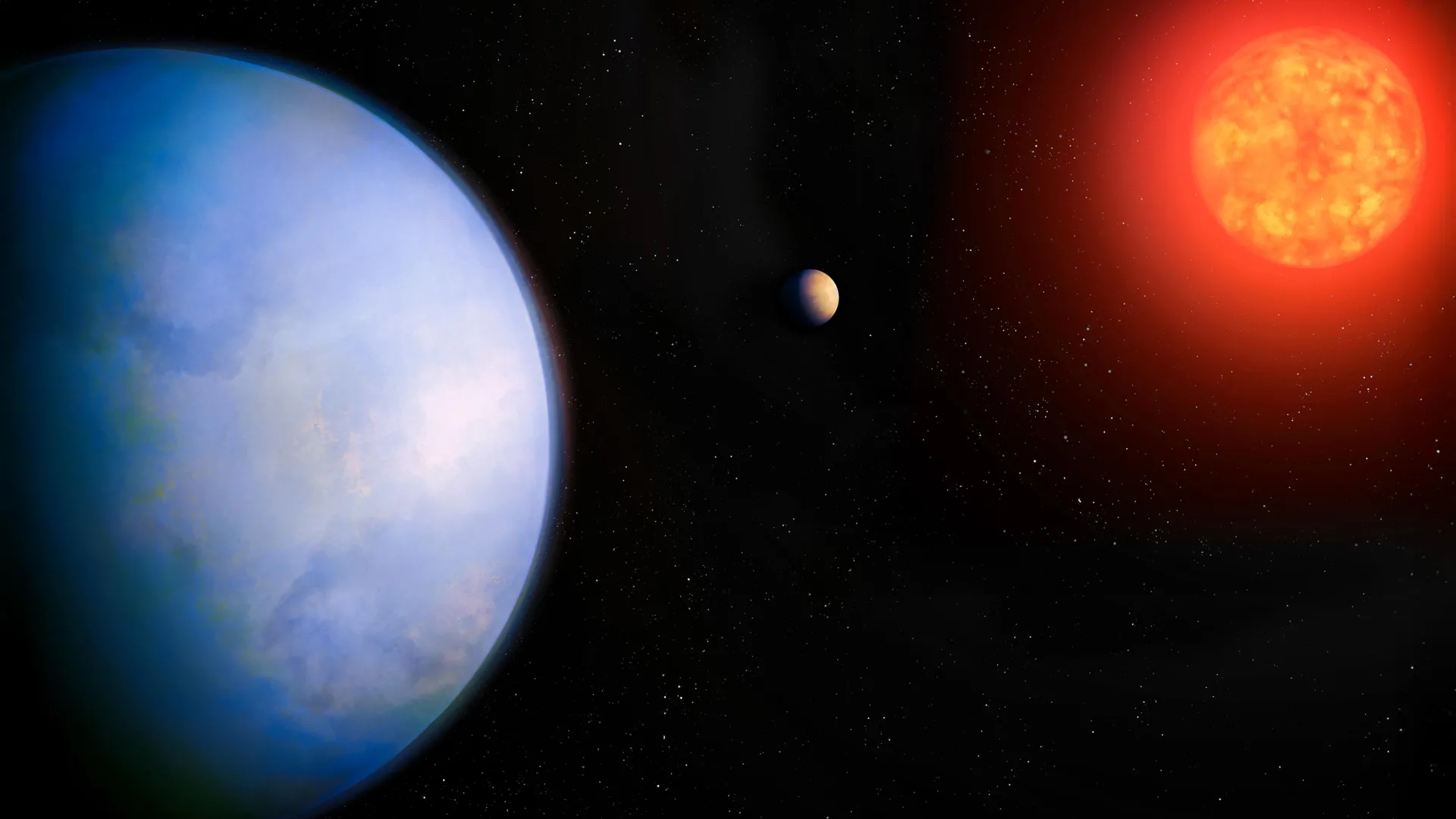Nearby super-Earth emerges as a top target in the search for life
Researchers found that the planet may have liquid water on its surface – a necessary ingredient for life.
- Date:
- November 23, 2025
- Source:
- University of California - Irvine
- Summary:
- Researchers have pinpointed a super-Earth in the habitable zone of a nearby M-dwarf star only 18 light-years away. Sophisticated instruments detected the planet’s gentle tug on its star, hinting at a rocky world that could hold liquid water. Future mega-telescopes may be able to directly image it—something impossible today.
- Share:

University of California, Irvine astronomers have identified an exoplanet located within a star's habitable zone, a region where temperatures could allow liquid water to exist on the surface. Liquid water is considered essential for every form of life currently known. The planet lies in a relatively nearby part of the Milky Way Galaxy and appears to have a rocky structure similar to Earth. It is several times more massive, placing it in the category of a "super-Earth."
The UC Irvine team and its collaborators describe their analysis of this planet in a paper recently published in The Astronomical Journal.
"We have found so many exoplanets at this point that discovering a new one is not such a big deal," said co-author Paul Robertson, UC Irvine associate professor of physics & astronomy. "What makes this especially valuable is that its host star is close by, at just about 18 light-years away. Cosmically speaking, it's practically next door."
Studying a Planet Orbiting an Active M-Dwarf Star
The newly identified planet, named GJ 251 c, circles an M-dwarf star, which is the most common and one of the oldest types of stars in our galaxy. M-dwarfs often show significant stellar activity, including starspots (cool, dark regions on the star's surface) and flares (sudden bursts of outward energy away from the star). These variations can imitate the subtle radial velocity signals astronomers look for, sometimes making it difficult to determine whether a planet is truly present.
Even so, the planet's close distance to Earth makes it a strong candidate for direct imaging using the University of California's Thirty Meter Telescope, which is currently under development.
The large mirrors planned for TMT could make it possible to directly observe faint worlds such as GJ 251 c and assess whether water may be present.
"TMT will be the only telescope with sufficient resolution to image exoplanets like this one. It's just not possible with smaller telescopes," said Corey Beard, Ph.D., data scientist at Design West Technologies, former graduate student from Robertson's group, and lead author of the study.
High-Precision Instruments Reveal Subtle Planet Signals
The research team detected GJ 251 c using data from the Habitable-zone Planet Finder and NEID -- two precision instruments designed for identifying exoplanets, both of which Robertson helped develop. These tools measure the tiny influences an orbiting planet has on its star.
As GJ 251 c pulls on its star through gravity, it produces small, periodic shifts in the star's light. HPF recorded these shifts, known as radial velocity signatures, and astronomers used them to confirm that the star is being influenced by an orbiting planet.
HPF also helps reduce the impact of M-dwarf stellar activity by observing in the infrared -- a region of the spectrum where disruptive signals from the star are weaker.
The team's computational models reached a strong enough level of statistical significance to classify GJ 251 c as an exoplanet candidate, reinforcing the need for direct imaging with TMT to verify its properties.
Preparing for Next-Generation Telescopes
"We are at the cutting edge of technology and analysis methods with this system," said Beard. "While its discovery is quite statistically significant, we are still determining the status of the planet due to the uncertainty of our instruments and methods. We need the next generation of telescopes to directly image this candidate, but what we also need is community investment."
Beard and Robertson hope their findings will encourage the exoplanet research community to conduct additional studies of GJ 251 c, especially as new ground-based observatories such as the Thirty Meter Telescope move closer to operational status.
Collaborators on the work include Jack Lubin of UCLA; Eric Ford and Suvrath Mahadevan of Pennsylvania State University; Gudmundur Stefansson of the University of the Netherlands; and Eric Wolf of the University of Colorado, Boulder.
The research received support from NSF grant AST-2108493 for the HPF exoplanet survey and NASA/NSF funding for the NN-EXPLORE program (grant number: 1716038); NASA ICAR program 80NSSC23K1399.
Story Source:
Materials provided by University of California - Irvine. Note: Content may be edited for style and length.
Journal Reference:
- Corey Beard, Paul Robertson, Jack Lubin, Eric B. Ford, Suvrath Mahadevan, Gudmundur Stefansson, Jason T. Wright, Eric Wolf, Vincent Kofman, Vidya Venkatesan, Ravi Kopparapu, Roan Arendtsz, Rae Holcomb, Raquel A. Martinez, Stephanie Sallum, Jacob K. Luhn, Chad F. Bender, Cullen H. Blake, William D. Cochran, Megan Delamer, Scott A. Diddams, Michael Endl, Samuel Halverson, Shubham Kanodia, Daniel M. Krolikowski, Andrea S. J. Lin, Sarah E. Logsdon, Michael W. McElwain, Andrew Monson, Joe P. Ninan, Jayadev Rajagopal, Arpita Roy, Christian Schwab, Ryan C. Terrien. Discovery of a Nearby Habitable Zone Super-Earth Candidate Amenable to Direct Imaging. The Astronomical Journal, 2025; 170 (5): 279 DOI: 10.3847/1538-3881/ae0e20
Cite This Page: